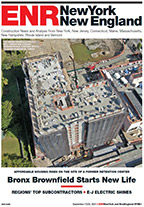Costruction is a risky business full of jobsite hazards, from life-threatening falls to blunt trauma injuries, but more insidious dangers exist, like crystalline silica inhalation, which can lead to a type of cancer known as pneumoconiosis. It’s what coal miners call “black lung” disease, where tiny airborne particles cause lesions and scarring on the lungs, gradually leaving workers unable to breathe.

Silicosis, its equally harmful cousin, currently affects 1.7 million workers annually, reports the Center for Disease Control (CDC). It’s caused by breathing one of earth’s most common minerals, silica, which becomes a corrosive inhalant from cutting, sawing, grinding, drilling and crushing stone, rock, concrete, brick, block, mortar and industrial sand.
In other words, it affects nearly every construction activity. Nicknamed “grinder’s asthma,” silicosis is progressive and irreversible, but also preventable.
Daily permissible exposure limits for quartz, the most common form of crystalline silica, is 250 micrograms per cu meter of air (µg/m3) for the construction industry. The requirement hasn’t been updated since 1971 when the Occupational Safety and Health Administration (OSHA) was created. The federal agency is now updating the standard with a proposed 80% cut to construction crystalline silica exposure limits, lowering it to 50-µg/m3 and thereby saving nearly 700 lives and preventing 1,600 new cases of silicosis annually.
“Every year, many exposed workers not only lose their ability to work, but also to breathe,” said OSHA assistant labor secretary David Michaels in a statement. “This proposal is expected to prevent thousands of deaths from silicosis—an incurable and progressive disease—as well as lung cancer, other respiratory diseases and kidney disease.”
The proposed revisions, published September 12 after two years of delay, additionally call for worker training, medical exams, record keeping, written access control plans, mandatory respirators and dust controls.
And it entails exposure-monitoring action at 25-µg/m3. The stricter standard will affect 534,000 businesses, 90% of them in construction. Compliance will cost the industry $511 million annually, OSHA says, although the total benefits exceed $4 billion.
“The agency has admitted its failure to properly enforce the existing standard,” says Geoffrey G. Burr, vice president of government affairs with Associated Builders and Contractors, Washington, D.C. “The agency clearly missed an opportunity to take a cost-effective approach while still improving compliance and worker safety.”
The Construction Industry Safety Coalition (CISC), which represents 25 construction trade associations, believes the proposed new silica rule is “significantly flawed” and “rife with errors and inaccurate data.” There is a lack of “scientific explanation justifying the new exposure limits,” says the group, which considers the standard virtually impossible to measure accurately using existing technology. It may not ensure worker protection either. Dust masks are the last line of defense, scientists say.
“The agency has not met its burden of demonstrating that the proposal is technologically and economically feasible,” says CISC representative Bradford T. Hammock, an attorney with Jackson Lewis LLP, Reston, Va., who previously served as OSHA’s lead counsel for safety standards. “In addition, OSHA’s proposed ancillary provisions are unworkable in the construction environment.”

